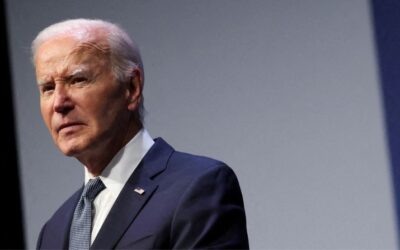The Wyoming Department of Transportation (WYDOT) held a series of public meetings across the state this month to get feedback on its draft Zero Emission Vehicle Strategy—an effort using federal funds to build out the state’s electric vehicle (EV) infrastructure. KHOL News Director Kyle Mackie spoke to WyoFile energy and climate reporter Dustin Bleizeffer about his Apr. 2 story, “Wyoming prepares to ‘electrify’ roadways,” to learn more.
The following interview transcript has been edited for clarity and brevity.
KYLE MACKIE/KHOL: Dustin, thank you so much for joining us today on KHOL.
DUSTIN BLEIZEFFER: Well, thank you for having me.
KHOL: So, your recent story for WyoFile dives into how Wyoming is gearing up to spend about $24 million to electrify the state’s roadways. Can you give us an overview of how that money is coming into the state and what the plan is for how to use it?
BLEIZEFFER: Yeah. So, right now, the Wyoming Department of Transportation has about $4 million from this Federal Electric Vehicle Infrastructure Program, and they’re going to get an additional $5 million each year for like the next four years. And so, that comes with some federal priorities attached to it. The first priorities are the interstates: I-80 first, then I-25, then I-90. And then the second kind of priority roadways are kind of the main and most vital routes to Grand Teton National Park and Yellowstone National Park. After those federal priorities, then the state is welcome to build out the EV infrastructure for general connectivity throughout state. You know, things like trying to fill in gaps in the central portion of the state, which EV drivers say that there’s a real need [for] there.
KHOL: Going back to the big picture of electric vehicles, despite costing more up front, we know that EVs are a key way we can reduce greenhouse gas emissions and fight climate change and also save some money at the pump. So, this sounds good, but we also know there are some big challenges to widespread adoption of EVs in Wyoming, right? And you wrote about some of those in your piece. Can you talk about some of those specific Wyoming challenges?
BLEIZEFFER: A couple of EV drivers I spoke with said that the prices are really coming down, and one EV driver I spoke to in particular said, ‘You can spend well over $50,000 on a new diesel truck.’ And you know, a lot of folks in Wyoming like their pickups and need those types of vehicles too. Patrick Lawson is an EV driver who lives in Rawlins. They have several EV vehicles in his household and, you know, they drive to the mountains. And these electric vehicles are really high performance. And so, you can pull a light camper up the mountains. For his work, he drives across the state—drives hundreds of miles across the state—and he and his employees often pull a utility trailer.
Just more [of the] kind of aspects about driving an EV vehicle in Wyoming are, you know, obviously, the long distances. And depending on the car that you have, generally with a full charge you can get about 300 miles, I’m told, particularly in a newer Tesla model. So, you do have to kind of plan your routes accordingly if you’re driving through the middle of Wyoming or from one side of the state to the other side. And like a lot of states in the Rockies, we have a lot of inclines, hills, things like that. That definitely chews into your mileage and efficiency. But on the other hand, you know, you can gain some of that mileage back when you’re going downhill. It helps recharge the battery. And in fact, those mileage challenges apply to gasoline and diesel vehicles as well.
KHOL: So, speaking of Teslas, you found in the course of your reporting that there are 460 EVs currently registered in Wyoming and about 360 of them are Teslas. And there’s also more Tesla charging stations across the state than for other brands. What does that mean for the future of EVs here and accessibility to other companies?
BLEIZEFFER: Yeah, that’s right. You know, and folks in Wyoming are going to want to have different options when it comes to electric vehicles. You know, in pickup trucks and things with towing power. And as those kind of models and the types of vehicles, those choices are opening up, there’s a real need for charging stations that’ll fit all models. So, it was more than five years ago [that] Tesla started installing charging stations in Wyoming. [You] started seeing them pop up here and there—probably in Jackson. I’ve seen them in Sheridan. And those are exclusive to Tesla models. So, that’s a real limiting factor for Wyoming drivers. And, you know, not only Wyoming drivers but most of the electric vehicles that are traveling on Wyoming roads are tourists. Tourists, and we’re starting to see more commercial vehicles that are electric. And so, if we want that type of commerce to continue, we’re going to have to accommodate that traffic is what the Wyoming Department of Transportation told me.
KHOL: Really interesting. Well, Dustin, thank you so much for joining us today on KHOL. We really appreciate it.
BLEIZEFFER: Oh, thank you so much.
More information about how to make public comments on Wyoming’s plan to electrify its roadways is available on the WYDOT website.





